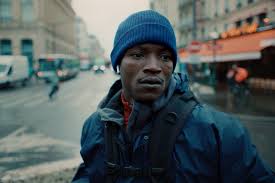Charlie Brooker’s near-future tech frightener Black Mirror Series Six has just landed on Netflix. Some of the review responses have been lukewarm, and the worry boils down to a shift of emphasis in the series. Up to now, Black Mirror has been interrogating our relationship with technology, with what it is doing to relationships between people. We could say that it has been showing how late capitalism has mutated from classic capitalism, in which relations between people are replaced with relations between things, commodities, to a dystopic world in which we are replaced with relations between images.
Those images are crafted, geared to what those who make profit from high-tech imagine to be our deep desires, and, in the process, technology reconfigures what we are as human beings. The underlying and most radical message of Black Mirror is that modern technology is infused with power and that, as well as being manipulated, we are complicit in it. Black Mirror is not so much holding up a looking glass to show us what we are, but showing us what Marx called our competitive greedy historically-specific ‘second nature’ under capitalism.
That complicity is what is fore-grounded in Series Six, with the suggestion that we need to move on from being ‘anti-tech’, which was the risk that the first five seasons took, to looking at what humans have become.
Five Episodes
The first episode, Joan is Awful, treads some familiar territory, and is the most reassuringly techie. Joan herself isn’t so awful, and wouldn’t make such relatable streaming content on the fictive online channel in the episode if she was. Her life, she discovers, is being broadcast on Streamberry, a little in-joke for Netflix, for it has the exact self-same format as Netflix itself.
Celebrities must be queuing up to appear in Black Mirror now, and this episode has Salma Hayek starring in the Streamberry universe, for which Brooker has written her a line referring to herself as an actress with “questionable English”. We see inside Streamberry further iterations of the channel in which people who are watching it see people watching other channels (and there are also fleeting references to earlier episodes of Black Mirror, before the series had been bought by Netflix and turned more glossy). So far so good.
The second episode, Loch Henry, is a real shocker. I mean it. If episode one is, among other things, about the perils of being looked at, episode two is about the dangers of looking. The poor characters trapped in the Scottish highlands are there to gawp, specifically to make a programme (for Streamberry) in which they will attempt to hook an audience, and are tempted to intrude into grief to do that. It’ll be no surprise that they will pay for that.
This, I reckon, is where the dangers of Black Mirror turning tech-less, and exploring the depths of human nature instead of the depths of social media are most apparent. This episode in a peculiar way naturalises violence, even while it is ostensibly about how media frames violence and uses it to sell a product. It is always necessary to attend to ‘naturalisation’ as a deepest and most insidious aspect of ideology under capitalism. When things look most normal, we need to ask how they have been ‘normalised’. In that respect, this episode treads a fine line between ideology and ideology-critique.
Episode three, Beyond the Sea, also had scenes I had to watch between my fingers. I have to vet Black Mirror now before suggesting episodes to watch with a friend, and watched it on my own, which made me feel a bit shaky afterwards (though not as shaky as I was after watching the previous episode). The hook for me, and maybe for you too, is that it had classic body swap stuff in it. The two men on the space station are able to visit earth through replicant bodies, I won’t say more than that, and you’ll be guessing that something goes wrong. It does. There is tech here, of course, but it is what human beings do with it that is the problem.
The main problem here for the two spacemen is that there are ‘anti-tech’ religious zealots around who are intent on messing things up, and so they do (warning, some nasty scenes at that point). The problem for me, which actually lightened the mood a bit and helpfully unglued me from the screen, is that the song motif was Charles Trenet’s La Mer (sometimes known as ‘Beyond the Sea’) which I had recently seen warbled by a singing fish in The Brand New Testament (a lovely film from 2015 that I do recommend, and it’s less violent if a bit spiritual).
Episode four, Mazey Day, takes us back into the horror realm again, and this time with hardly any tech framing, reaching back instead into some well-worn ghoul narratives. The question will be what kind of ghoul Mazey has found on the road and what kind of ghoul she turns into as a result of that. This is an episode that includes a recurring motif in Black Mirror, which is where you have a long-shot of a car driving down a deserted road and you can be sure that they will crash into something. The driver is usually carefree, sometimes drunk and sometimes on drugs (and I’ll guess from the prevalence of these scenes in the six series that it is something that haunts Brooker).
Here where there is tech it is a camera, and, as in episode two, there is the temptation to use the camera to take an image through which to make a profit. It is the camera in the episode that has been the subject of some critical scrutiny online, and it is not only that it is in the hands of the paparazzi (clearly a well-founded object of scorn for Brooker). Here, though, Black Mirror is itself thoroughly recuperated, and finally, you will see, it is CGI that is in command of the show.
Episode five, Demon 79, redeemed Season Six for me, and, now vetted for shared viewing, I will watch it again. Brooker usually writes Black Mirror episodes alone, but this final episode is co-written with established screenwriter and stand-up comedian Bisha K Ali. The politics of race is always interesting in Black Mirror, sometimes topicalised and usually progressively normalised. Black characters are accorded agency as part of the narrative, though in this case there is a shift of focus; this is the first episode to tackle racism head-on, and it does that in a searing and funny way.
The episode, which is set in 1979, stars Anjana Vasan who starred in the fantastic Channel Four series We Are Lady Parts about a Muslim women rock band (check it out), and I’ll bet she really enjoyed making this. The episode is spattered with music from that year, and what blood is spattered is done so in the best possible taste. There are nods to human nature in the comment by the demon that she must, while not actually ‘corrupt’ be ‘corruptible’, and we see her fantasising about dealing with the racists at work; what we see welling up within her is anger and resistance, which is very relatable.
Being watched
So, what there is about tech in Season Six is a warning about what we do with technology and what it does to us, about what we are doing when we are watching and what happens when someone wants to watch us. Maybe it’s best not to watch these five episodes back to back. When you have, you can take a break and go back to watch Episode one of Season One, The National Anthem, about Tony Blair fucking a pig, which is curiously cathartic.
Art (54) Book Review (127) Books (114) Capitalism (68) China (81) Climate Emergency (99) Conservative Government (90) Conservative Party (45) COVID-19 (45) EcoSocialism (58) Elections (83) Europe (46) Fascism (61) Film (49) Film Review (68) France (72) Gaza (62) Imperialism (100) Israel (129) Italy (46) Keir Starmer (56) Labour Party (114) Long Read (42) Marxism (50) Marxist Theory (48) Palestine (179) pandemic (78) Protest (154) Russia (341) Solidarity (146) Statement (49) Trade Unionism (142) Ukraine (349) United States of America (134) War (369)
Latest Articles
- Souleymane’s StoryDave Kellaway reviews a film that takes you on a ride with a migrant and asylum seeker
- How Britain helped the ZionistsTony Richardson reviews Palestine 1936 a new film directed by Annemarie Jacir (2025)
- Dear Gen Z, You Deserve Better Than Eco‑Pessimism!Dylan Naughten highlights the difficult challenges facing Gen Z and outlines possible solutions
- When the Last Witness DiesSimon Pearson reflects on Remembrance Day and the end of memory
- What Israeli “Victory” Looks LikeThe Trump deal doesn’t destroy Hamas but it does further Palestinian dispossession, writes Peter Beinart.







Thanks for this. Agreed that the descent into horror isn’t as strong as the tech dystopia. But it was David Cameron not Blair who was rumoured to have done the pig, right?
hmm, i was remembering a tony blair kind of figure in the Black Mirror episode, and that was 2011, and the ‘piggate’ affair with cameron was actually four years later, that story broke in 2015. Uncanny how Charlie Brooker anticipated things.